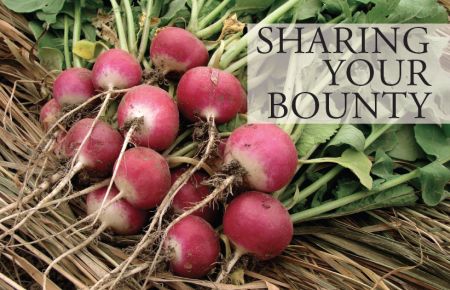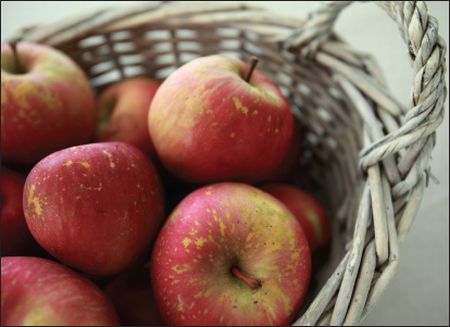
Plant a Row for the Hungry
(PAR) Program
One in ten households in the United States experiences hunger or the risk of hunger every year. This is an astounding number of adults and children who are not receiving the proper foods, nutrients, and sustenance to maintain a healthy lifestyle. What can you do as a gardener to help provide fresh produce to the hungry in your community? Churches, schools, and other local organizations try to provide food for those who are hungry by giving to local food banks and shelters and by establishing soup kitchens and other programs. Often these food drives can only accept nonperishable items, but, recognizing the need for fresh fruits and vegetables in a healthy diet, many organizations are beginning to take produce on a conditional basis. If they can use the produce in their prepared meals or distribute them to needy families before the food begins to perish, they will accept it.
Started in 1995 in Anchorage, Alaska, by Jeff Lowenfels as a public service program of the Garden Writers Association (GWA) and Foundation, PAR is a way for those who garden and grow their own vegetables and fruit to help combat hunger and poverty in their local communities. PAR encourages local gardeners to plant one extra row of produce in their gardens and then to donate that harvest to neighbors or others in the community who struggle to feed themselves and their families. Donating excess vegetables and fruit to your local food bank, soup kitchen, shelter, or other food agency to help feed the hungry in your local area is a wonderful way to share your love of gardening and to be an active and important member of your community.
Anyone in the U.S. or Canada can participate in the PAR program, and members grow and donate over one million tons of food a year to help fight hunger in their local communities. Some people establish a community garden that solely grows food to give to local pantries and soup kitchens. Others simply grow additional crops and give individually to those in need.
If you want to become involved in the PAR program, it is best to call or e-mail the GWA in order to receive more information about PAR programs in your area. It is also beneficial to call or visit local food agencies and see what crops they need most, or what types of fruits and vegetables they would like to provide for their customers. Most agencies seek out food that can be shelved for a few days if necessary and also foods that are high in nutritional value. They also accept fresh herbs that they can then use when making foods, such as soups. Flowers are also acceptable donations.
When thinking about growing excess vegetables and fruit in your garden for donation, it is good to select easily grown crops that will help to maximize your harvest and will encourage you to be enthusiastic about growing and tending the plants. Some easily grown and highly desirable plants are: beans, cucumbers, peas, radishes, summer squash, and tomatoes. Then, once your produce is ready for harvesting, gather up the excess and take it to a selected PAR drop-off site or, if acceptable, directly to the food agency.
There are some guidelines for growing fruits and vegetables that are acceptable for donation. Always be sure to contact your local food banks and soup kitchens for information on what they need in terms of fresh produce. Be sure to space your plantings apart so that your growing season and harvesting season are extended over a longer period of time. That way, you’ll be able to donate longer. Choose to grow produce that lasts well and stays fresher longer. Pick your ripe produce promptly and be sure to clean it of any dirt (but don’t wash it). And, of course, don’t ever give away overripe or spoiled produce.

How to Start Your Own PAR Program
What if your local community does not yet have a PAR program? It is easy to establish your own program by contacting PAR (either by e-mail, by visiting the GWA website, or by calling toll free; see contact information below). This way, you will be able to gain access to information on creating a successful PAR program. Next, you should try to recruit volunteers (neighbors, community gardeners, garden clubs, garden centers, and nurseries) to be a part of the program. It is important to establish a local coordinator who can be a “go-to” person for any questions volunteers may have about the program, growing tips, and drop-off sites.
In addition to gathering volunteers, it is essential to find a food distribution agency partner who wants to collect the donated produce. This may be a food bank, food pantry, soup kitchen, or local shelter. It is also wise to find someone to market and publicize your local program. Getting the word out about the program will help gather support and more gardeners who want to help. There should also be someone appointed to help coordinate and oversee the dropoff sites and to take food to the designated area if need be.
For a PAR program to be a success, it is a good idea to reach out to your local extension services; community, church, and school gardens; businesses; and local food agencies to see if a specific PAR garden can be established. It is also wise to ask farmers to donate their unsold produce from farmers’ markets and trucks in the area. All of these various elements will help you to create a successful fresh food donation program in your area and will ensure that those who are hungry in your community will not be lacking in fresh produce in their diets.
For more information on Plant a Row for the Hungry, please call, e-mail, or visit the Garden Writers Association at:
1-877-GWAA-PAR
To find a local PAR contact in your area, please call the Foodchain at: 1-800-845-3008.